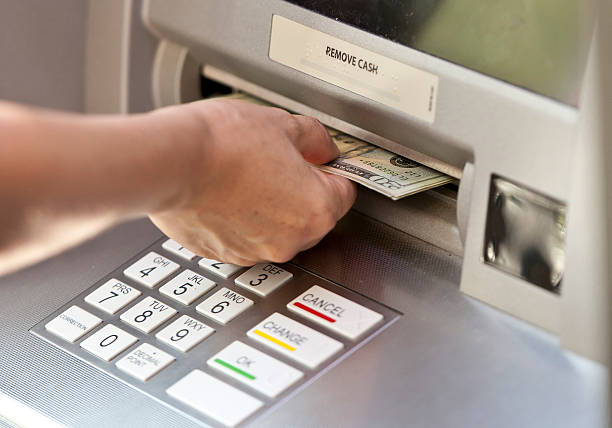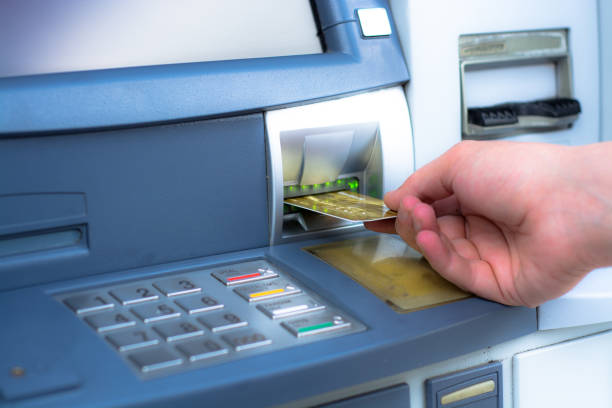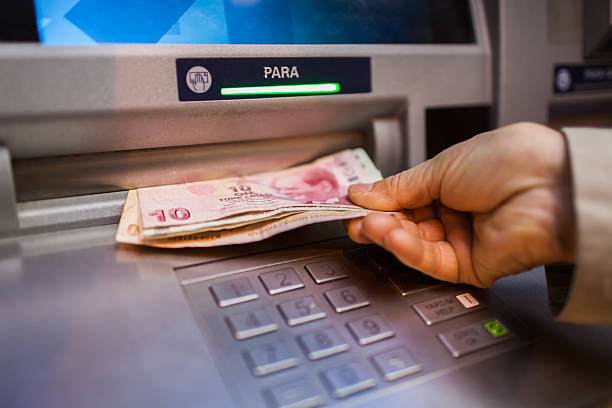Chase bank withdrawals (complete 2023 guide)
Are you looking for information about how to make withdrawals from your Chase Bank account? Do you want to learn the fees and limits associated with withdrawing money from your Chase Bank account and the quickest and easiest way to get your cash?

Having a reliable and convenient method of accessing funds from banks is a crucial necessity in today’s economy. For many financial services providers, especially large national ones such as Chase Bank, it is important to understand all of the withdrawal options available to customers.
In this complete guide to Chase Bank withdrawals in 2023, we will discuss all of the rules, fees, and processes associated with making deposits or withdrawals from any bank accounts at Chase. We will explain everything that consumers need to know when tapping into their cash reserves quickly and safely.
What is Chase Bank?
Chase Bank is one of the largest banking institutions in the United States. It is a subsidiary of JP Morgan Chase, which provides banking services to millions of Americans. The bank, which was founded in 1799, offers an array of products and services including savings accounts, credit cards, mortgages, investments and more.
In addition to its physical locations throughout the country, customers can also access their accounts online or through Chase’s mobile app. This makes it easy and convenient for customers to manage their finances on the go.
The Different Types of Withdrawal Options Available at Chase Bank
Chase Bank offers a variety of withdrawal options for customers looking to access their funds. Customers can choose between a variety of methods, such as ATM withdrawals, check-writing services or even direct bank transfers.
For those who prefer to use an ATM machine, Chase Bank has over 16,000 ATMs that are available to customers 24 hours a day. You can withdraw cash from your account with just your debit card and PIN number. You may also be able to make deposits into your account at certain Chase ATMs depending on the type of account you have.
No matter which method you choose, it’s important that you take the time to understand the fees associated with each option before making a withdrawal so that you can ensure you’re getting the best deal possible.
Savings Accounts and Money Market Accounts
Savings accounts and money market accounts are two popular banking options for those looking to save money. Each account offers different features, so it’s important to understand the differences before making a decision.
Savings accounts are generally used as a long-term savings option, offering higher interest rates than checking accounts. They also have low minimum deposits and no monthly fees or other service charges.
However, savings accounts usually have restricted withdrawals, with some banks requiring customers to give notice before taking out money from their account.
In conclusion, choosing between a savings account and money market account depends on your financial goals and needs. Taking the time to compare features and fees can help you make the best decision for your situation.
Withdrawal Limits for Savings and Money Market Accounts
When it comes to withdrawing money from savings and money market accounts, there are limits in place. Withdrawal limits vary depending on the bank and account type. Generally speaking, savings accounts have fewer withdrawal restrictions than money market accounts.
Most banks allow a certain number of withdrawals per month without penalty, with some even waiving the fee for additional withdrawals. Money market accounts, however, typically allow just three withdrawals each month before incurring additional fees or penalties.
It is important to note that any withdrawal may affect the interest rate on the account, so it is important to read the terms and conditions before making a withdrawal. Additionally, some banks have minimum balance requirements which must be met in order to avoid fees or other penalties. Understanding these rules is essential when deciding which type of account best fits your financial needs and goals.
Automatic Payments from Savings and Money Market Accounts
Automatic payments from savings and money market accounts are an easy way to make sure your bills are paid on time. With this method, you can set up a regular payment schedule and the bank will take care of it for you. Automatic payments also help reduce the possibility of late fees and other penalties, as well as helping to keep track of all your expenses in one place.
This is especially helpful if you have multiple accounts that need to be monitored. Many banks offer automatic payment options for both savings and money market accounts, so it’s important to read through the terms and conditions carefully before setting up an automatic payment plan.
Additionally, some banks require minimum balance requirements which must be maintained in order to avoid additional fees or penalties. Keeping track of your finances with automatic payments is a great way to ensure financial stability.
Additional Information About Savings and Money Market Accounts
Savings and money market accounts are great options for those looking to save money. These accounts offer higher interest rates than checking accounts, as well as more liquidity than certificates of deposit. They can be used to store funds for long-term savings goals or emergency expenses.
Additionally, banks may offer additional incentives such as cash rewards or waived fees when customers maintain a minimum balance requirement. Savings and money market accounts also typically have less restrictive withdrawal limits than other types of banking accounts, so it is important to read the terms and conditions of the account before making any withdrawals.

Withdrawals from savings and money market accounts must be made in person at a bank branch or via an ATM with a valid debit card associated with the account. It is important to remember that withdrawing more than six times per month can result in fees being charged by the bank, so it’s important to keep track of all withdrawals in order to avoid any unnecessary fees.
Checking Accounts
Checking accounts are a popular way to manage day-to-day finances. They provide the ability to easily and quickly deposit income and make payments, such as rent and bills. Checking accounts also generally have fewer restrictions on withdrawals than savings or money market accounts, allowing customers to access their funds with greater flexibility.
In addition, many banks offer additional perks to customers who open and maintain a checking account, such as waived ATM fees or interest rates for balances over a certain amount. It is important to read the terms and conditions of any bank account before opening it in order to ensure that it meets your needs and comes with the features you want.
Additionally, it’s important to keep track of all transactions made from your checking account in order to avoid overdraft fees or other charges that can come from making too many withdrawals in a short amount of time.
Withdrawal Limits for Checking Accounts
When it comes to withdrawals from checking accounts, most banks have limits in place. These limits vary depending on the institution, but typically range from a few hundred to a few thousand dollars per day.
It is important to check with your bank to find out what their specific withdrawal limits are before making any large transactions. Additionally, some banks may require additional verification for larger withdrawals or may limit access to funds if too many withdrawals are made in a short period of time.
It is always best to plan ahead and be aware of any potential restrictions when you need to make significant withdrawals from your checking account.
Automatic Payments from Checking Accounts
Automating payments from your checking account can be a great way to simplify your financial life. Automated payments allow you to set up recurring transfers from your checking account to pay for bills, investments, and other expenses. With automated payments, you don’t need to worry about forgetting to make the payment on time or remembering the due date.
Instead, the payment will be taken out of your account automatically each month or as often as you choose. You can also control how much money is transferred and when it is sent. This allows you to save time and ensure that all of your bills are paid on time.
Additionally, many banks offer rewards or cash back when you use their automated payment services. Be sure to check with your bank for more details on their specific programs.
Additional Information About Checking Accounts
Checking accounts are a convenient way to manage your finances and can be tailored to fit your specific needs. Some banks offer additional features such as overdraft protection, free or discounted ATM access, and even rewards programs. Depending on the bank, you may also have access to online banking, mobile banking, and bill pay services.
It is important to understand the fees associated with each type of account before committing to a particular one. Furthermore, many banks offer special promotions that may provide extra value for customers who open an account with them. Be sure to research all of the options available in order to find the best checking account that fits your financial needs.
Debit Cards
Debit cards offer a convenient way to access your checking account funds. Debit cards are connected directly to your checking account, allowing you to make purchases and withdraw cash with the swipe of a card. When making a purchase, the amount is simply deducted from your checking account balance.
It is important to keep track of your balance so that it remains above zero in order to avoid overdraft fees or declined payments. It is also important to note that some merchants may place holds on debit card transactions which can temporarily reduce your available balance even though the funds have not yet been withdrawn from your account.

When using your debit card for ATM withdrawals, make sure you understand any associated fees as these can vary from bank to bank. With proper management, debit cards can be an efficient way to pay for goods and services without carrying large amounts of cash or having to write checks.